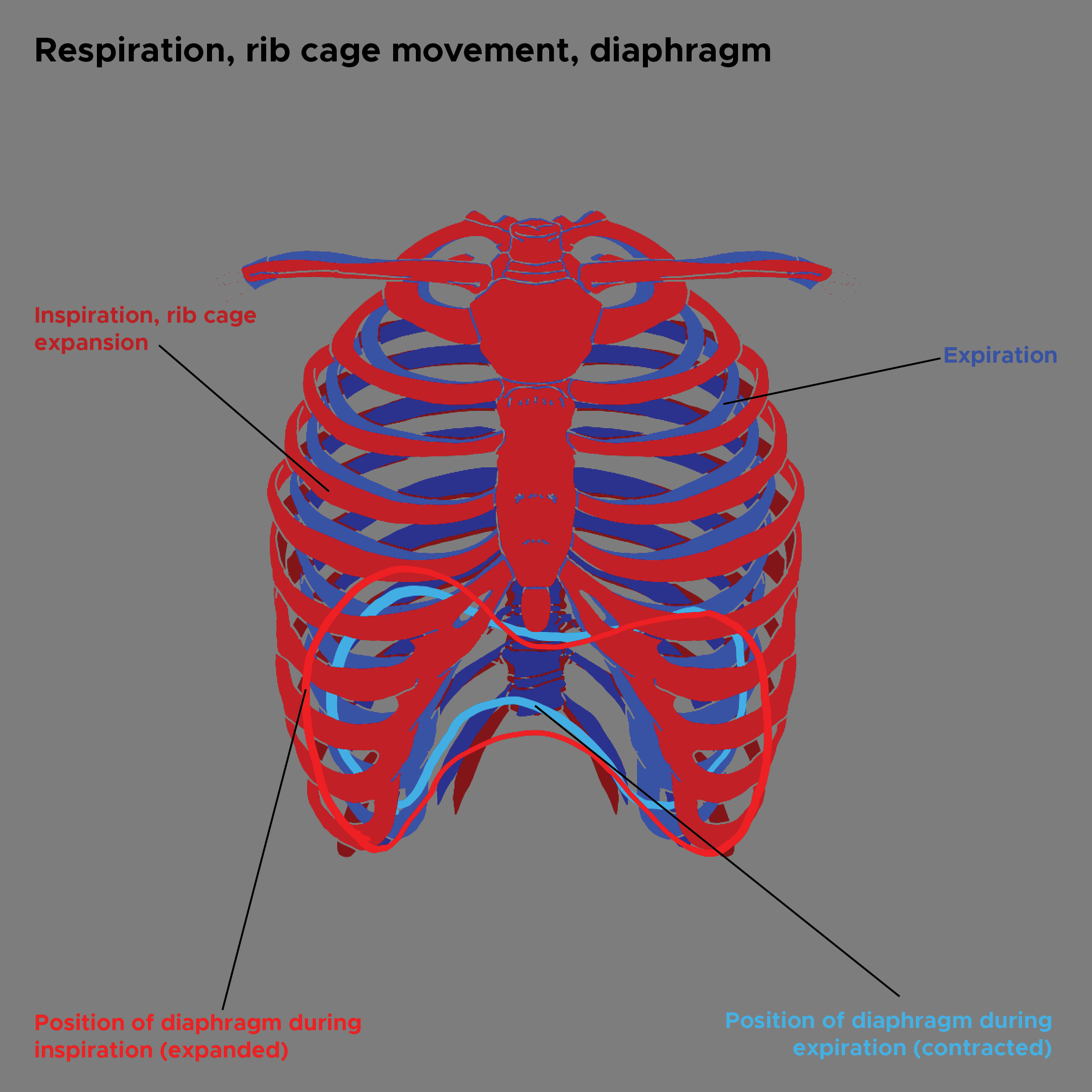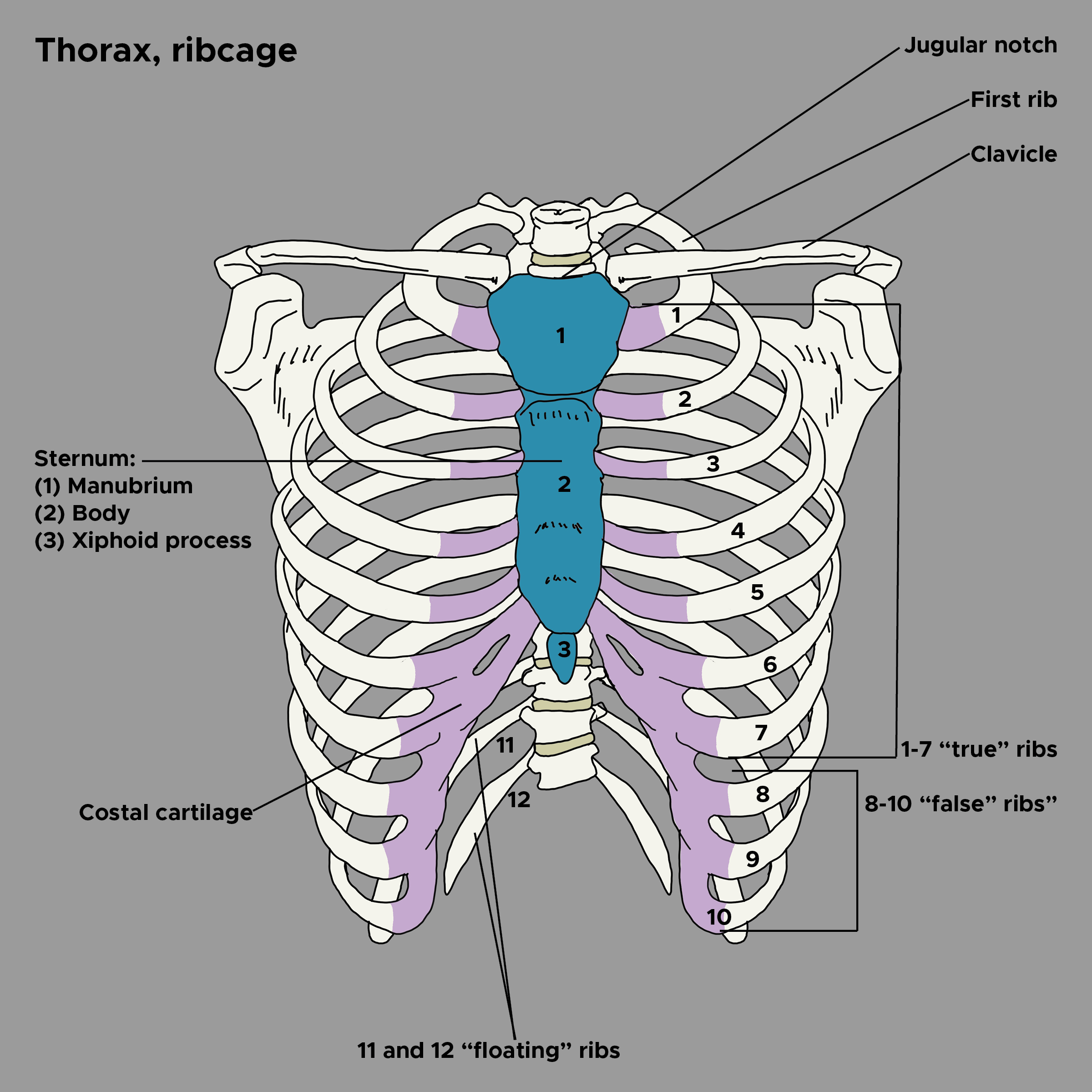[1]
West JB. The original presentation of Boyle's law. Journal of applied physiology (Bethesda, Md. : 1985). 1999 Oct:87(4):1543-5
[PubMed PMID: 10517789]
[3]
Kirum GG, Munabi IG, Kukiriza J, Tumusiime G, Kange M, Ibingira C, Buwembo W. Anatomical variations of the sternal angle and anomalies of adult human sterna from the Galloway osteological collection at Makerere University Anatomy Department. Folia morphologica. 2017:76(4):689-694. doi: 10.5603/FM.a2017.0026. Epub 2017 Mar 29
[PubMed PMID: 28353306]
[4]
Monsoro-Burq AH. Sclerotome development and morphogenesis: when experimental embryology meets genetics. The International journal of developmental biology. 2005:49(2-3):301-8
[PubMed PMID: 15906245]
[5]
J AR, G M, K M, P R. Closing the cleft over a throbbing heart: neonatal sternal cleft. BMJ case reports. 2014 Jul 4:2014():. doi: 10.1136/bcr-2014-204529. Epub 2014 Jul 4
[PubMed PMID: 25100810]
Level 3 (low-level) evidence
[6]
Gailloud P. The supreme intercostal artery includes the last cervical intersegmental artery (C7) - angiographic validation of the intersegmental nomenclature proposed by Dorcas Padget in 1954. Anatomical record (Hoboken, N.J. : 2007). 2014 May:297(5):810-8. doi: 10.1002/ar.22893. Epub 2014 Mar 7
[PubMed PMID: 24610867]
Level 1 (high-level) evidence
[7]
Shimizu S, Tanaka R, Kan S, Suzuki S, Kurata A, Fujii K. Origins of the segmental arteries in the aorta: an anatomic study for selective catheterization with spinal arteriography. AJNR. American journal of neuroradiology. 2005 Apr:26(4):922-8
[PubMed PMID: 15814947]
[8]
Berdajs D, Zünd G, Turina MI, Genoni M. Blood supply of the sternum and its importance in internal thoracic artery harvesting. The Annals of thoracic surgery. 2006 Jun:81(6):2155-9
[PubMed PMID: 16731146]
[9]
Kutoglu T, Turut M, Kocabiyik N, Ozan H, Yildirim M. Anatomical analysis of azygos vein system in human cadavers. Romanian journal of morphology and embryology = Revue roumaine de morphologie et embryologie. 2012:53(4):1051-6
[PubMed PMID: 23303031]
[13]
Watson AH, Williams C, James BV. Activity patterns in latissimus dorsi and sternocleidomastoid in classical singers. Journal of voice : official journal of the Voice Foundation. 2012 May:26(3):e95-e105. doi: 10.1016/j.jvoice.2011.04.008. Epub 2011 Jul 2
[PubMed PMID: 21724365]
[14]
Jelev L, Hristov S, Ovtscharoff W. Variety of transversus thoracis muscle in relation to the internal thoracic artery: an autopsy study of 120 subjects. Journal of cardiothoracic surgery. 2011 Jan 27:6():11. doi: 10.1186/1749-8090-6-11. Epub 2011 Jan 27
[PubMed PMID: 21272314]
[15]
Ramadan SU, Türkmen N, Dolgun NA, Gökharman D, Menezes RG, Kacar M, Koşar U. Sex determination from measurements of the sternum and fourth rib using multislice computed tomography of the chest. Forensic science international. 2010 Apr 15:197(1-3):120.e1-5. doi: 10.1016/j.forsciint.2009.12.049. Epub 2010 Jan 18
[PubMed PMID: 20083365]
[16]
Tadele H, Chanie A. Thoracic Ectopia Cordis in an Ethiopian Neonate. Ethiopian journal of health sciences. 2017 Mar:27(2):203-205
[PubMed PMID: 28579717]
[17]
Davran R, Bayarogullari H, Atci N, Kayali A, Ozturk F, Burakgazi G. Congenital abnormalities of the ribs: evaluation with multidetector computed tomography. JPMA. The Journal of the Pakistan Medical Association. 2017 Feb:67(2):178-186
[PubMed PMID: 28138167]
[18]
Paydar S, Farhadi P, Ghaffarpasand F. Advanced Trauma Life Support (ATLS) Tips to Be Kept In Mind. Bulletin of emergency and trauma. 2013 Jan:1(1):49-51
[PubMed PMID: 27162823]
[20]
Hunt PA, Greaves I, Owens WA. Emergency thoracotomy in thoracic trauma-a review. Injury. 2006 Jan:37(1):1-19
[PubMed PMID: 16410079]
[21]
Katagiri M, Abe T, Yokoba M, Dobashi Y, Tomita T, Easton PA. Neck and abdominal muscle activity during a sniff. Respiratory medicine. 2003 Sep:97(9):1027-35
[PubMed PMID: 14509557]
[22]
Davignon K, Kwo J, Bigatello LM. Pathophysiology and management of the flail chest. Minerva anestesiologica. 2004 Apr:70(4):193-9
[PubMed PMID: 15173695]



